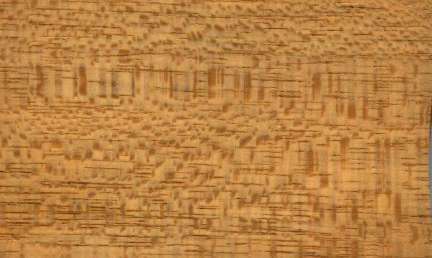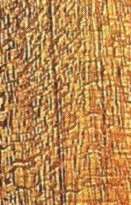 
Cananga (Canangium odoratum)
Family: Annonaceae
Common names: Al-langigan, Alangilan, Anangibang, Anangilan, Burak, Cananga, Fereng, Ilang-ilang, Kenanga, Tangid, Tangig, Tangit
Distributed in: Australia, Brunei, Burma, India, Indonesia, Malaysia, Myanmar, Papua New Guinea, Philippines, Solomon Islands, Vanuatu (Oceania and S.E. Asia)
Distribution overview: Lower Burma, Malayan Peninsula, Philippines, Borneo, West Irian, and Australia. Widely cultivated for its flowers.
Common uses: Bedroom suites, Blockboard, Boxes and crates, Building materials, Cabinetmaking, Canoes, Carvings, Casks, Chairs, Chests, Concealed parts (Furniture), Core Stock, Cutting surfaces, Decorative plywood, Decorative veneer, Desks, Dining-room furniture, Dowell pins, Dowells, Drawer sides, Figured veneer, Fine furniture, Fishnet floats, Floats, Floor lamps, Flooring: industrial heavy traffic, Furniture , Furniture components, Furniture squares or stock, Furniture, Hatracks, Interior construction, Interior trim, Kitchen cabinets, Living-room suites, Matchboxes, Matches, Mathematical instruments, Millwork, Moldings, Musical instruments: percussion, Novelties, Plywood, Precision instruments, Pulp/Paper products, Pulpwood, Shingles, Sporting Goods, Toys, Turnery, Veneer, Wooden shoes
Product sources: The tree bes cultivated mostly for its flowers. They contain ilang-ilang, an aromatic oil which is distilled and used for the production of perfume.
Environment profile: Status unknown due to inadequate information
Tree size:
Slightly buttressed, and often develops a straight and cylindrical bole.
Colors: the heart isYellow to golden-yellow to orange, Yellowish tanand the sapwoodNot clearly differentiated from the heartwood., White to yellow.The grain isStraight, the textureUniform
Natural durability: Very durable, Very little natural resistance
Odor: No specific smell or taste
Drying Defects: Blue stain
Ease of Drying: Thick Stock Requires Care
Tree Identification: Bole/stem form is straight
Blunting Effect: Slight effect
Boring: Easy
Carving: Good results
Cutting Resistance: Low resistance
Gluing: Easy to glue
Mortising: Good mortising properties
Moulding: Good moulding properties
Movement in Service: Good moulding properties
Nailing: Easy to nail, Holds nails well
Planing: Easy to plane
Resistance to Impregnation: Sapwood is permeable
Response to hand tools: Responds Readily
Sanding: Easy to sand
Turning: Easy to turn
Polishing: Very Good to Excellent; Staining: Staining (Characteristic) = coloured water-soluble extract
;
- Numerical data Metric
- Numerical data English
- Strength properties
- References
 |
 |
 |
 |
| Item |
Green |
Dry |
Metric |
| Specific Gravity |
0,26 |
0,28 |
|
| Density |
|
384 |
kg/m3 |
| Bending Strength |
318 |
470 |
kg/cm2 |
| Crushing Strength |
22 |
24 |
kg/cm2 |
| Hardness |
|
148 |
kg |
| Impact Strength |
|
|
cm |
| Shearing Strength |
|
69 |
kg/cm2 |
| Stiffness |
72 |
87 |
1000 kg/cm2 |
| Tangential Shrinkage |
|
|
% |
| Radial Shrinkage |
3 |
|
% |
| Weight |
384 |
320 |
kg/m3 |
| Maximum Load |
|
|
cm-kg/cm3 |
| Toughness |
|
124 |
cm-kg |
| Static Bending |
211 |
285 |
kg/cm2 |
|
 |  |  |  | | Item | Green | Dry | English | | Bending Strength | 4524 | 6691 | psi | | Crushing Strength | 320 | 349 | psi | | Density | | 24 | lbs/ft3 | | Hardness | | 328 | lbs | | Maximum Crushing Strength | 2094 | 3690 | psi | | Shearing Strength | | 985 | psi | | Static Bending | 3011 | 4056 | psi | | Stiffness | 1032 | 1239 | 1000 psi | | Toughness | | 108 | inch-lbs | | Specific Gravity | 0.26 | 0.28 | | | Weight | 24 | 20 | lbs/ft3 | | Radial Shrinkage | 3 | | % | | Tangential Shrinkage | 7 | | % | |
Max. crushing strength = low
Hardness (side grain) = very soft
Shrinkage, Tangential = moderate
Density (dry weight) = 23-30 lbs/cu. ft.
Density (dry weight) = 15-22 lbs/cu. ft.
Bending strength (MOR) = low
Shrinkage, Tangential = small
Shrinkage, Radial = very small
Shrinkage, Radial = small
Modulus of Elasticity (stiffness) = low
Density (dry weight) = 31-37 lbs/cu. ft.
Bending strength (MOR) = very low
Weight = light
Surfaces may dent or scratch easily
Surfaces may dent easily
Soft
Shrinkage, Radial = moderate
Shearing strength (parallel to grain) = low
Modulus of Elasticity (stiffness) = very low
Compression strength (parallel to grain) = low
Bolza, E.,1975,Properties and Uses of 175 Timber Species from Papua New Guinea and West,Irian,C.S.I.R.O. Div. Building Research Report,no.34Browne, F.G.,1955,Forest Trees of Sarawak and Brunei and their Products.,Government Printing Office, Kuching, SarawakCause, M.L.; Rudder, E.J. and Kynaston, W.T.,1989,Queensland Timbers Their Nomenclature, Density, and Lyctid Susceptability,Queensland Department of Forestry, Technical Pamplet No.2Chudnoff, M.,1984,Tropical Timbers of the World,U.S.A. Department of Agriculture, Forest Service, Forest Products,Laboratory, Madison.Eddowes, P.J. 1977. Commercial Timbers of Papua New Guinea - Their Properties and Uses. Forest Products Research Center, Office of Forests, Department of Primary Industry, Papua New Guinea.Eddowes, P.J.,1977,Commercial Timbers of Papua New Guinea: Their Properties and Uses,Hebano Press, Port Moresby, Papua New GuineaEscolano, J.O., et al,1969,Book Papers from Gubas - ilang-ilang and taluto,Philippine Lumberman,15(4,pp16-20France - C.T.F.T./C.T.B.,1982,Guide pour le Choix des Essences Deroulables-pour la fabrication du,contreplaque,C.T.F.T./C.T.B. FranceKeating, W.G., Bolza, E.,1982,Characteristics properties and uses of timbers. South East Asia, Northern,Australia and the Pacific,C.S.I.R.O. Div. Chemical Technology,Inkata Press,1Lamb, G.N.,1955,Foreign Woods Canangium odoratum,Wood and Wood Products,6019, p58Lauricio, F. M., Bellosillo, S. B., The Mechanical and Related Properties of Philippine Woods, The Lumberman, 12(5):A-H.Lauricio, F.M., Bellosillo, S.B.,1966,Fifth Progress Report on the Mechanical and Related Properties of,Philippine woods,Philippine Lumberman,12(5,p66Little, E.L., Wadsworth, F.H.,1964,Common Trees of Puerto Rico and the Virgin Islands,U.S.A. Department of Agriculture, Agriculture Handbook,No.249McMillen, J.M., Bois, P.J.,1976,Kiln Schedules for Foreign Woods,U.S.A,Department of Agriculture, Forest Products Utilization Tec. Report,No.2Reyes, L.J.,1938,Philippine Woods,Commonwealth of the Philippines Department of Agriculture and Commerce,Technical Bulletin,No.7Sarawak Forestry Department,1953,Tree and Timbers of Sarawak and Borneo,Sarawak Forestry Department Leaflet,No.25Smith, N.J.H, J.T. Williams, D.L. Plucknett and J.P. Talbot.1992.Tropical Forests and their Crops.Comstock Publishing Associates, a division of Cornell University Press, Ithaca.WCMC. 1992. Conservation Status Listing - Trees and Timbers of the World. World Conservation Monitoring Center-Plants Programme, Cambridge, CB3 ODL, United Kingdom.Whitmore, T.C. (Ed.,1972,Tree Flora of Malaya A Manual for Foresters Volume 1,Forest Department Ministry of Agriculture and Lands Malaysia
|









